Deep Originals
In Deep Originals* I planned to rethink my choreographic archive using AI-technology. The title was a word play alluding to deepfake. Such computer generated videos and images based on deep learning algorithms, that teach themselves how to solve problems with large data sets, are used to swap faces in digital content to make the fake appear real. My intention was to use AI to discover deeper patterns in my own choreographic approach.
With the question about authenticity of one’s artistic voice in mind, I planned to use my artistic archive compiled throughout the years and with the help of AI, discover something that exceeds my naked eye or my analytical capabilities.

image1: produced by PoseNet, running on tensorflow.js
During the first few weeks of the research a myriad of questions opened up concerning the expectations to train AI to create simulations of my past works to inform my new work or to produce unprecedented work and results.
I aimed for making an AI a collaborator that would help me discover deep structures in my work that escape the human eye and create a digital model of how I could describe my choreographic approach.
As the computer vision presents problems working with the video - high computational and storage resource requirements, I reconsidered the entry point into my archive. Among videos, images, audio recordings and text I decided to start with the latter.
In order to not be dependent on or subject to only commercial uses of these technologies that are increasingly mediating my everyday life it is crucial to address the sharing aspect of the research - access, exchange, non-expertise use. As well as inbuilt gendered bias in the mentioned tools, which when addressed properly would offer a chance of becoming more usable for larger number of people.

Currently I am working with Infranodus - text-network analysis tool. I am focusing on the textual part of my archive and am comparing the discourse on my artistic practice depending on the context - grant applications, public announcements, social media platform comments and posts, private chats and similar.
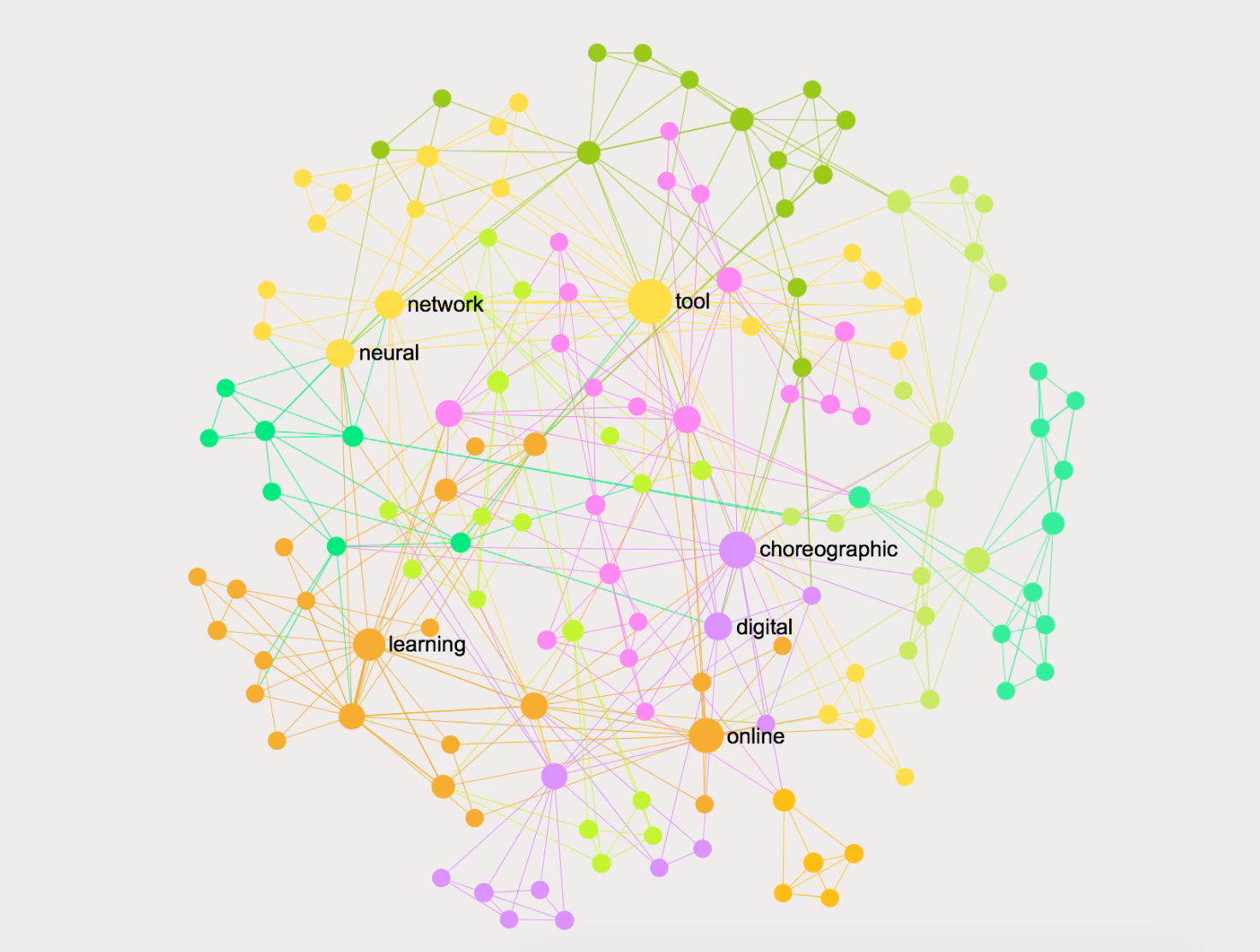 image2: Infranodus working session screenshot (analysis of the very description on the left side of the website)
image2: Infranodus working session screenshot (analysis of the very description on the left side of the website)Funded by the Federal Government Commissioner for Culture and the Media in the programNEUSTART KULTUR, [aid program DIS-TANZEN/ tanz:digital/ DIS-TANZ-START] of the DachverbandTanz Deutschland.
Gefördert durch die Beauftragte der Bundesregierung für Kultur und Medien im ProgrammNEUSTART KULTUR, [Hilfsprogramm DIS-TANZEN/ tanz:digital/ DIS-TANZ-START] des DachverbandTanz Deutschland.

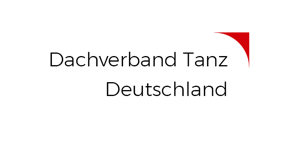
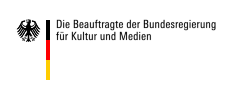
https://madewitholga.be/pages/Deeporiginals
for detailed material visit - http://madewitholga.be/pages/OffstageOthers
My primary intention of the residency was to look into how we speak about dance and how we practice it; how the discursive and physical practices relate in co-constructing one another. I was interested in how somatic discourse is not only descriptive but also performative part of the bodily practices. I aimed for exploration of orality in dance, carrying much of the characteristics or imprints of physical practices that get lost in the process of articulating it in the written word. The first residency was focused on developing a series of studio interviews with somatic/dance practitioners that would later be transformed into a written work of fiction.
1st phase - 1.12.2020-31.1.2021
Off-stage Others explores the role of orality in dance, as part of the practice and as a way to narrativize (inscribe, rewrite, and capture in language) our dance practice. Through a series of interviews with dancers and other artists, I explored how discursive and physical practices relate to and co-construct each other. The map of concerns collected during the process addresses how the practitioners' pre-public discourse is shaped in relation to the specificity of their artistic practice.
![]()
I continue my work in a subsequent TakeCare residency with two important questions that are crucial for me as further guidelines; how does digital discourse affect the somatic, how can we reconceptualize the notion of "experience" based on the analytical conditions of the digital, what the body can still do, and the resurgence of the body as a resistance to the digitization of experience and the mystification to remain opaque in the face of the AI-driven extractionist agenda. And the second is about the research itself - how can I make the results of my research transparent and share it with the community I've engaged with, or how can I fundamentally imagine what will happen to the results.
I highly recommend keeping a research diary as part of the methodology to keep ourselves aware of what we encounter in the course of the research than to jump to conclusions and interpret the series of events, obstacles, and unexpected questions that arise in the research. Firstly, to note for ourselves where we are with our own questions, as this opens up a scope of tools and possibilities for experimentation as well as for possible implementations that we can easily overlook when deciding in advance what the (desired) outcomes of our research are.
Off-stage Others explores the role of orality in dance, as part of the practice and as a way to narrativize (inscribe, rewrite, and capture in language) our dance practice. Through a series of interviews with dancers and other artists, I explored how discursive and physical practices relate to and co-construct each other. The map of concerns collected during the process addresses how the practitioners' pre-public discourse is shaped in relation to the specificity of their artistic practice.
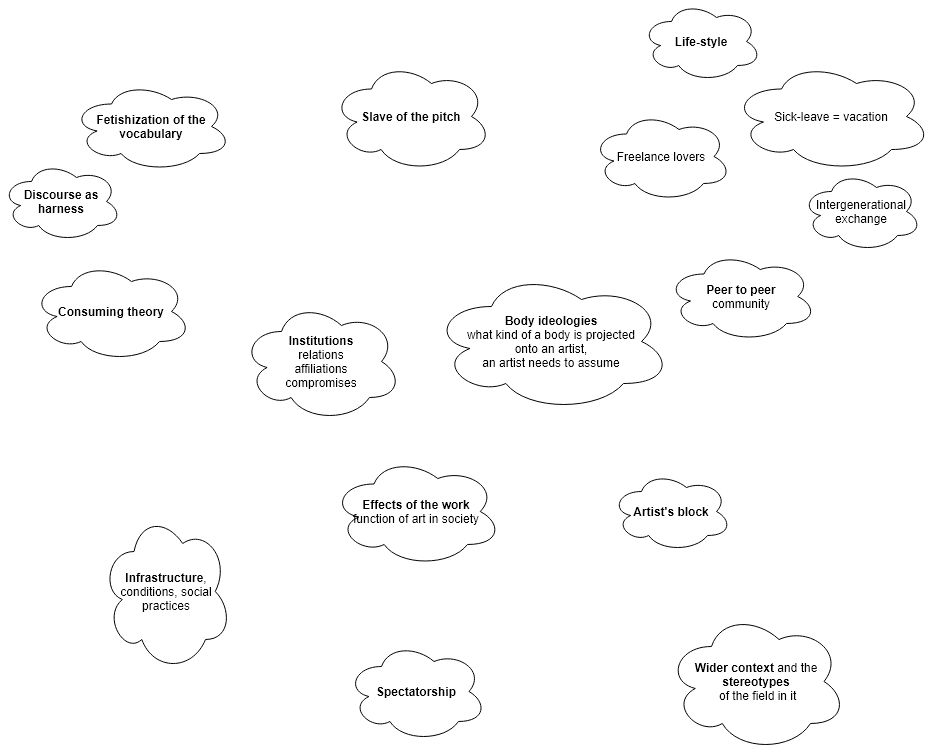
I continue my work in a subsequent TakeCare residency with two important questions that are crucial for me as further guidelines; how does digital discourse affect the somatic, how can we reconceptualize the notion of "experience" based on the analytical conditions of the digital, what the body can still do, and the resurgence of the body as a resistance to the digitization of experience and the mystification to remain opaque in the face of the AI-driven extractionist agenda. And the second is about the research itself - how can I make the results of my research transparent and share it with the community I've engaged with, or how can I fundamentally imagine what will happen to the results.
I highly recommend keeping a research diary as part of the methodology to keep ourselves aware of what we encounter in the course of the research than to jump to conclusions and interpret the series of events, obstacles, and unexpected questions that arise in the research. Firstly, to note for ourselves where we are with our own questions, as this opens up a scope of tools and possibilities for experimentation as well as for possible implementations that we can easily overlook when deciding in advance what the (desired) outcomes of our research are.
2nd phase - 1.2.-31.3.2021
The main focus of this research was to capture the gap between formally held and lived beliefs, and our concerns about what we make social versus what we individualise and how this colours the narratives by which we live, work, collaborate, suffer, create, love, and have families. I believe in collectivising these half-digested thoughts, in order to transform them into better stories that will, in turn, breed better realities. This way, we move our communities away from unified hive-minds, and find solidarity through sharing our personal situations.
Through numerous interviews I tried to trace a sort of a pre-public discourse, that would capture opinions, desires, worries, complaints, sarcastic remarks, bits and pieces of culture we share. Although in simple, popular phrases my research was an attempt to dive deep into the engaged perspectives of the artists interviewed and a general overview of the artistic concerns.
Half-digested thou
![]()
ghts, catch phrases, and statements; some of these we’ve heard over and over, others we might have contemplated but don’t really want (or dare) to put out there. Some might even be internalised clichés that we don’t want to assume or know only too well. A semi-private collection that once shared and circulated can shift a wider agenda on what matters to artists the most. Although starting with my closest colleagues and ourselves might be quite a small bubble (if not an echo-chamber) I ultimately aimed for shaping this research into a tool to connect distinct disciplines and different generations.
Research trajectory led me from a map of concerns - ranging from the precarity of artistic work and the traumas of art education to the social mechanisms of cooperation governing our intimate attachments and creative endeavours, to an idea of a board-game.
By not limiting myself to the medium and testing my ideas with multiple conversationalist*, I found most productive work in continuous shaping of the gap between my set-goals and the conditions set by the material I was working with. The future plans include diving into the complexity and intertwinement of the various aspects that
make up freelance artistic life by creating a format that can make this research shareable and of interest to the same community that participated in it and wider.
The proto-board game is aiming to collectively push towards clear self-evaluation and setting new standards for ourselves and the community within the artistic practices.
The main focus of this research was to capture the gap between formally held and lived beliefs, and our concerns about what we make social versus what we individualise and how this colours the narratives by which we live, work, collaborate, suffer, create, love, and have families. I believe in collectivising these half-digested thoughts, in order to transform them into better stories that will, in turn, breed better realities. This way, we move our communities away from unified hive-minds, and find solidarity through sharing our personal situations.
Through numerous interviews I tried to trace a sort of a pre-public discourse, that would capture opinions, desires, worries, complaints, sarcastic remarks, bits and pieces of culture we share. Although in simple, popular phrases my research was an attempt to dive deep into the engaged perspectives of the artists interviewed and a general overview of the artistic concerns.
Half-digested thou
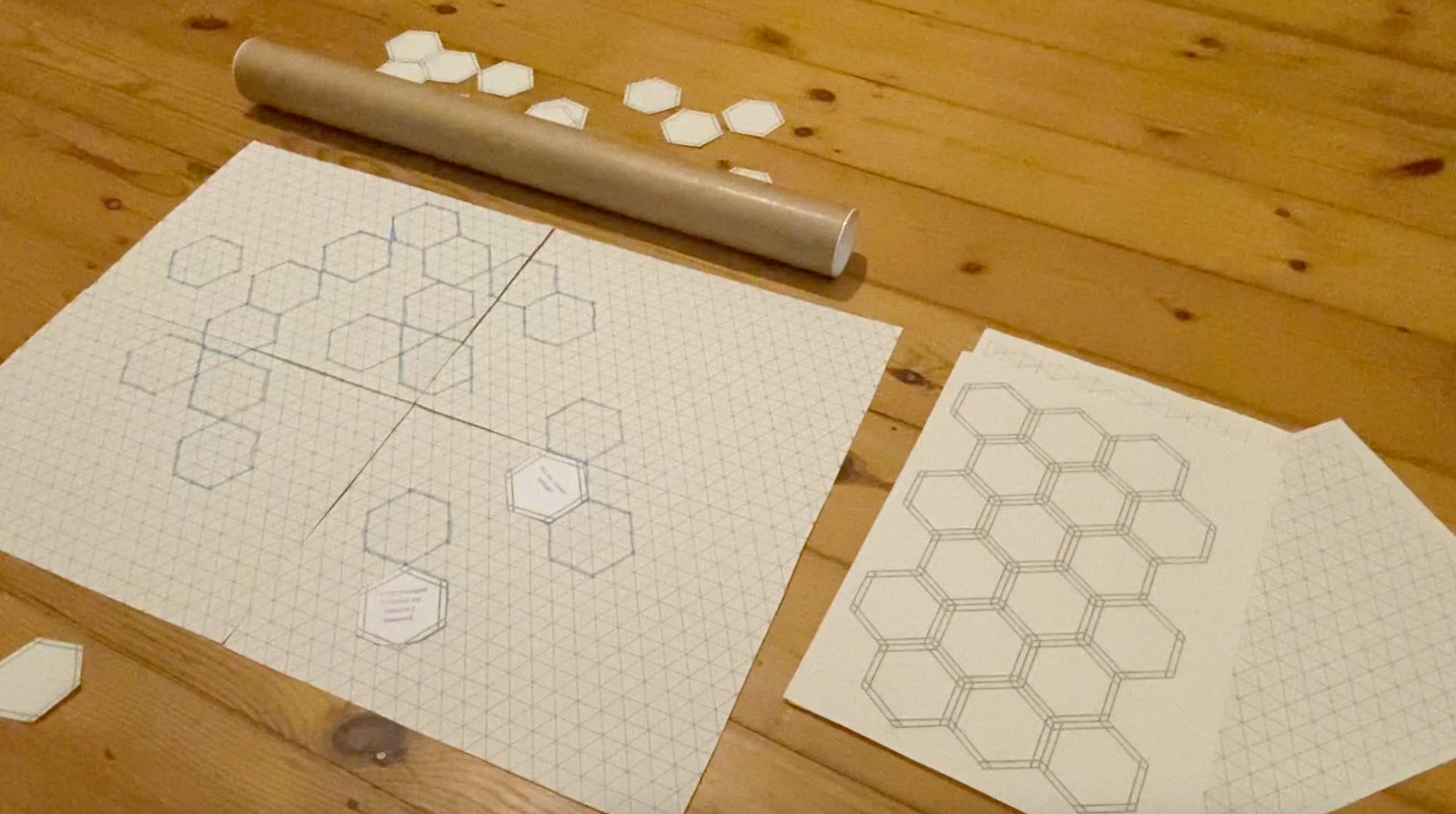
ghts, catch phrases, and statements; some of these we’ve heard over and over, others we might have contemplated but don’t really want (or dare) to put out there. Some might even be internalised clichés that we don’t want to assume or know only too well. A semi-private collection that once shared and circulated can shift a wider agenda on what matters to artists the most. Although starting with my closest colleagues and ourselves might be quite a small bubble (if not an echo-chamber) I ultimately aimed for shaping this research into a tool to connect distinct disciplines and different generations.
Research trajectory led me from a map of concerns - ranging from the precarity of artistic work and the traumas of art education to the social mechanisms of cooperation governing our intimate attachments and creative endeavours, to an idea of a board-game.
By not limiting myself to the medium and testing my ideas with multiple conversationalist*, I found most productive work in continuous shaping of the gap between my set-goals and the conditions set by the material I was working with. The future plans include diving into the complexity and intertwinement of the various aspects that
make up freelance artistic life by creating a format that can make this research shareable and of interest to the same community that participated in it and wider.
The proto-board game is aiming to collectively push towards clear self-evaluation and setting new standards for ourselves and the community within the artistic practices.
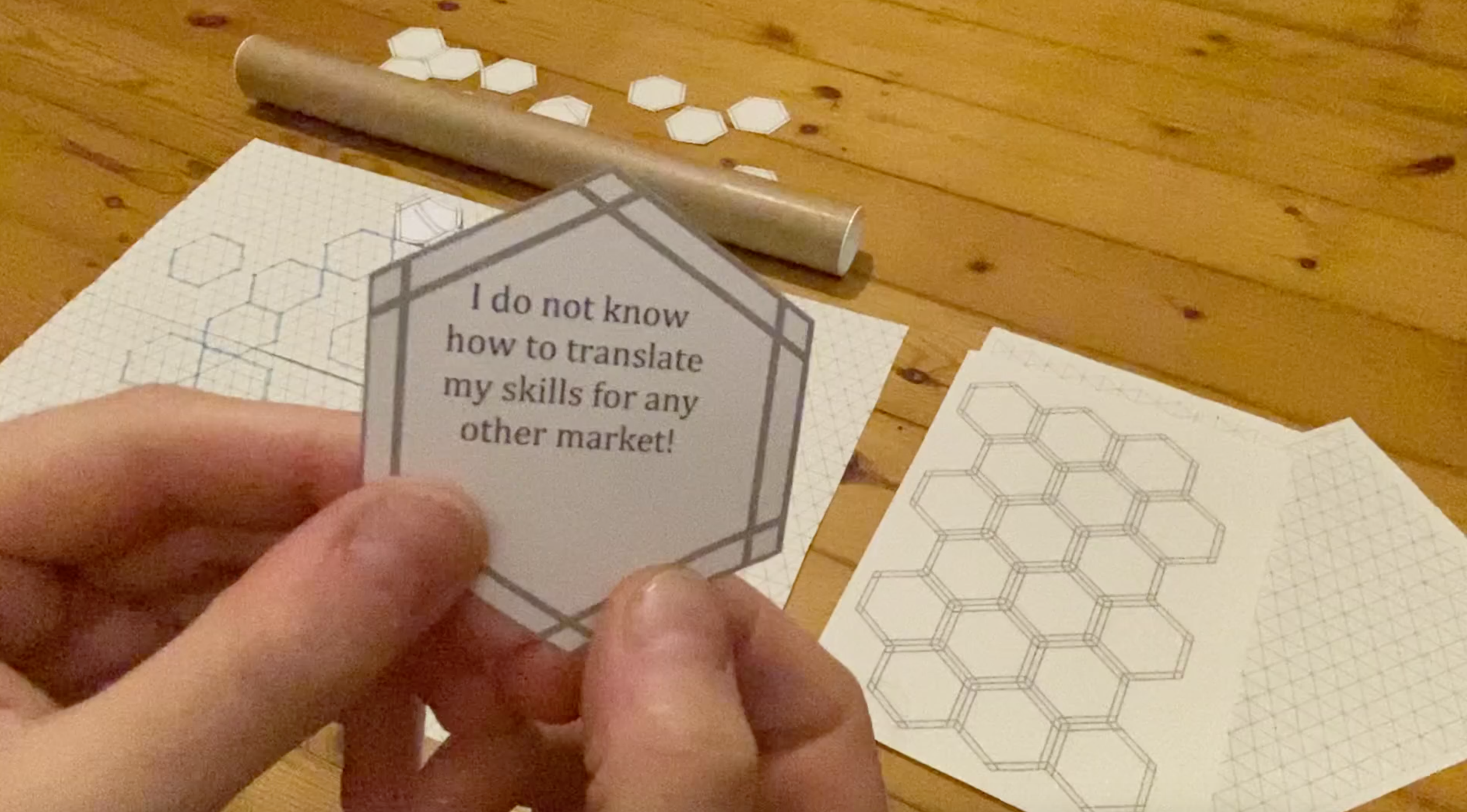
Supported by Fonds Darstellende Künste with funds from the Federal Government Commissioner for
Culture and the Media.
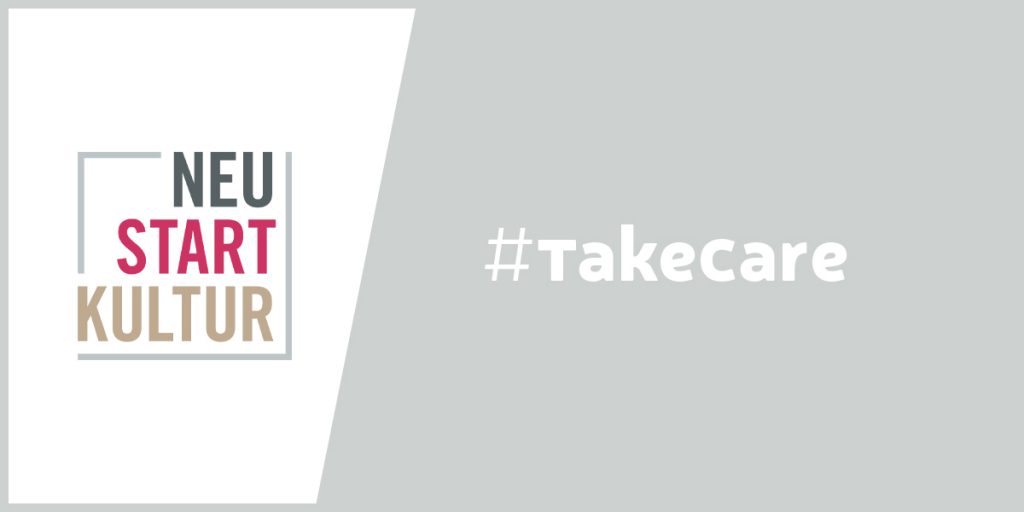
Pop-Fi
game

Poster designed by: Jernej Žumer
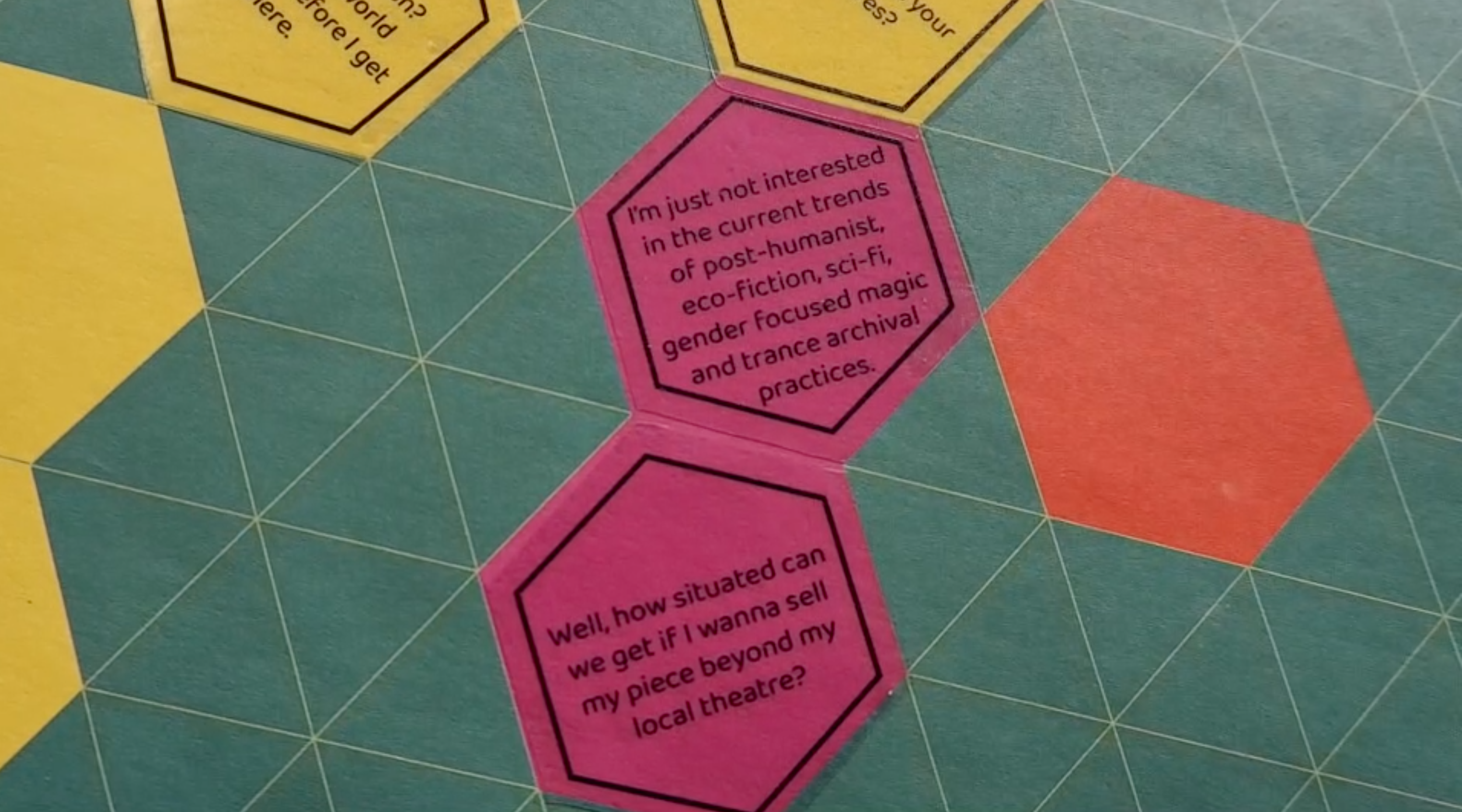
Authorised
GO TO TRAILER BY CLICKING ON THE LINK
see first version of Authorised from 2014,
filmed in Mousonturm, Frankfurt am Main LINK
“Art requires reflection. Audiences require curiosity – in addition to the desire to engage in reflection. Both curiosity and desire are what we aim to arouse – with a festival that always marks a state of exception. With dance, choreographic experiments and artistic ventures. With socially relevant art that establishes connections between the work the audience.
The festival-wide installation “AUTHORISED” by Lili M. Rampre puts the audience in front of the camera in exactly this way. It allows spectators to have a say, toying with the concept of authorship in art and the role of the beholder, by enquiring: What was the biggest challenge you faced while developing this work? What inspired the choreography? And anyway: What is it about?
Pondering these questions when we attend a performance confronts us with our own perceptive faculties. Watching is an active task – a balancing act between what is real and what is imaginary. A single performance can change our perspective and our mentality. We truly believe in the power of art when it is met with curiosity and interest.” tanz nrw 2019

KONZEPT / RECHERCHE / SCRIPT / INSTALLATION: Lili M. Rampre
KAMERA / SCHNITT / KÜNSTLERISCHE MITARBEIT: Lars Klostermann
Produktion
Lili M. Rampre
Koproduktion
Festival tanz nrw 19
Gefördert durch
Kunststiftung NRW
Dance Pop-FI
Dance Pop Fi is a project by Lili M. Rampre and Júlia Rúbies Subirós developing strategies to ventriloquise theoretical ideas through popular culture.
Using techniques such as appropriation, dubbing, comic resources, performance and poetry, we gather concerns about the art domain and 're-sample' them within another mainstream context, commonly known by many.
In this way, we seek to transform the often distressing anxiety of the academic discourse that surrounds the discipline of dance, choreography and artistic research. The project is part of Lili’s research on artistic discourse formation, supported by apass Research Center, platform for artistic research in Brussels, as Lili is their associated researcher in 2020/2021.
Watch Workshop video here:
https://vimeo.com/401409810
pw workshop-epic
Video made by Federico Vladimir Strate Pezdirc![]()
photos by Igor UnukUsing techniques such as appropriation, dubbing, comic resources, performance and poetry, we gather concerns about the art domain and 're-sample' them within another mainstream context, commonly known by many.
In this way, we seek to transform the often distressing anxiety of the academic discourse that surrounds the discipline of dance, choreography and artistic research. The project is part of Lili’s research on artistic discourse formation, supported by apass Research Center, platform for artistic research in Brussels, as Lili is their associated researcher in 2020/2021.
Watch Workshop video here:
https://vimeo.com/401409810
pw workshop-epic
Video made by Federico Vladimir Strate Pezdirc


Lili M. Rampre has spent the last few years researching the role of the spectator, pedagogue, student, in short, figures in the dance production domain that are surrounding the stage and has been focusing on the conditions that generate the artistic discourse in dance.
Júlia Rúbies has been questioning the means of artistic production, the criticism and the neoliberal restrictions that affect the content, production, distribution and reception of dance.
They come together in the sustained practice of reflection and artistic response to matters of artistic discourse in relation to artistic
practice and the generation of sedimentary narratives that dominate institutions and artistic spaces.
practice and the generation of sedimentary narratives that dominate institutions and artistic spaces.
